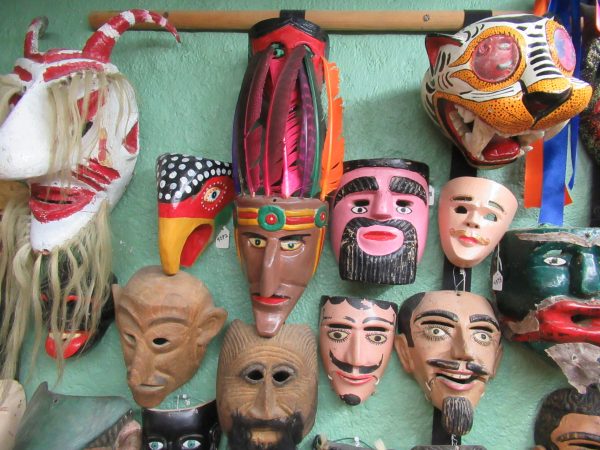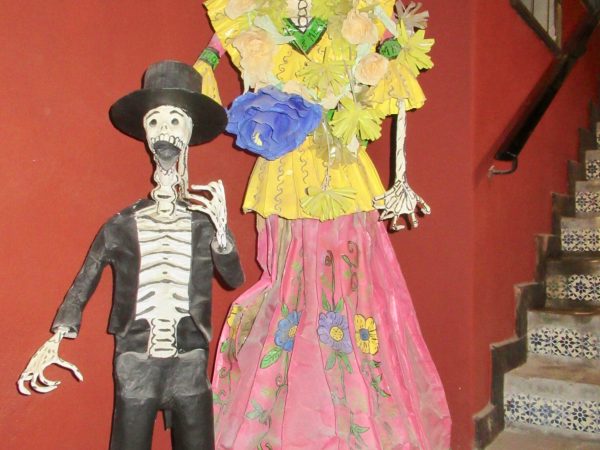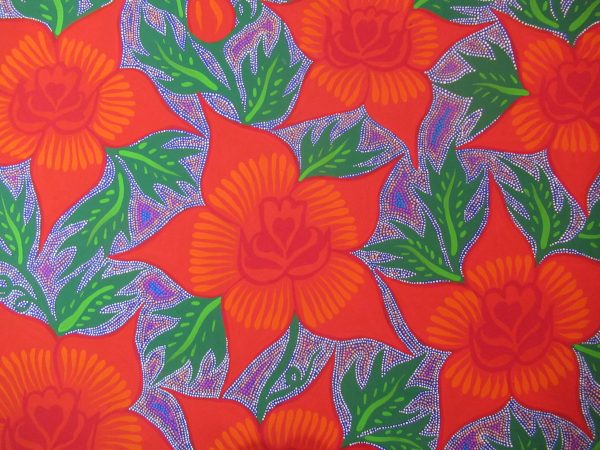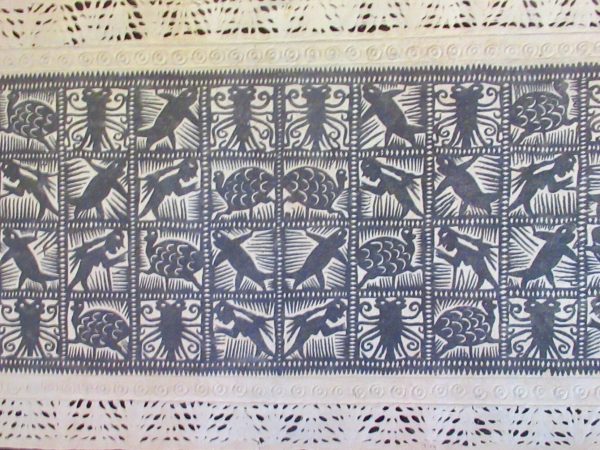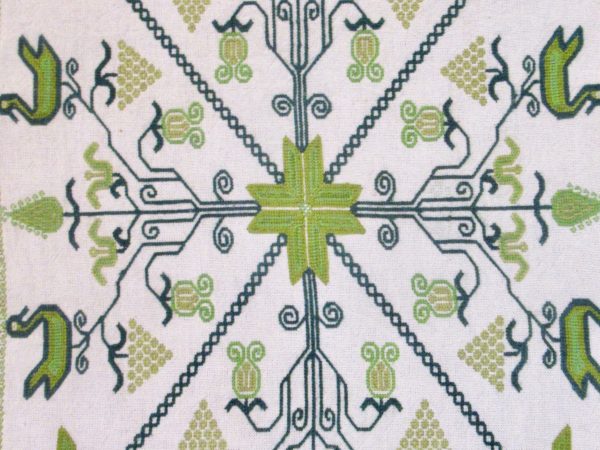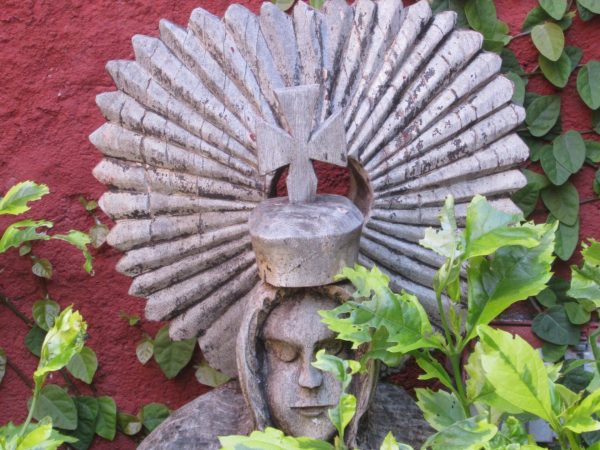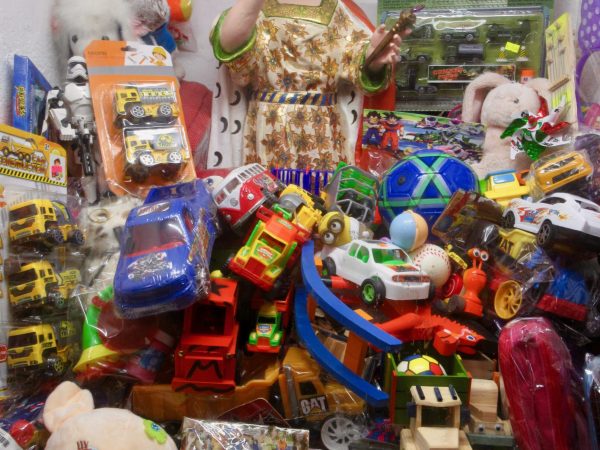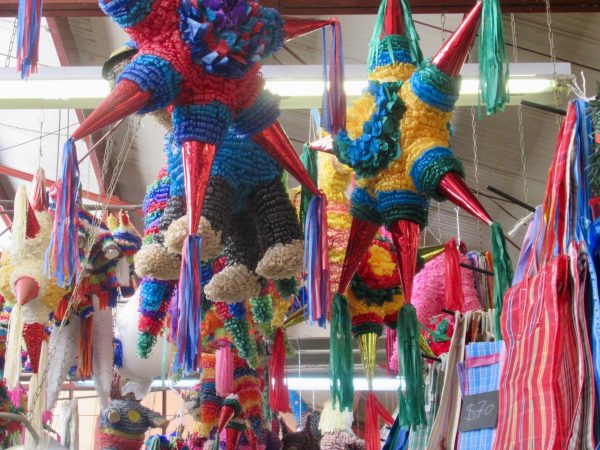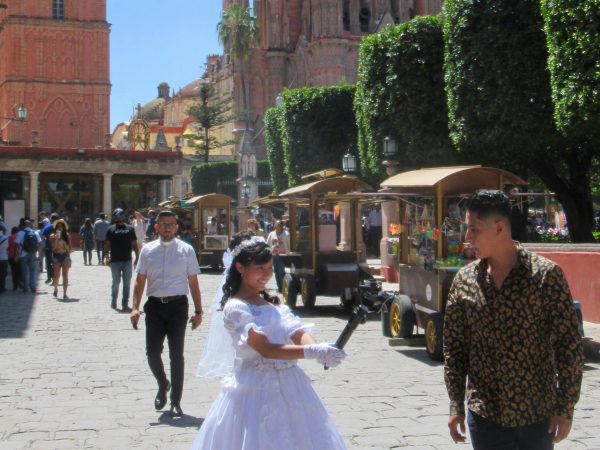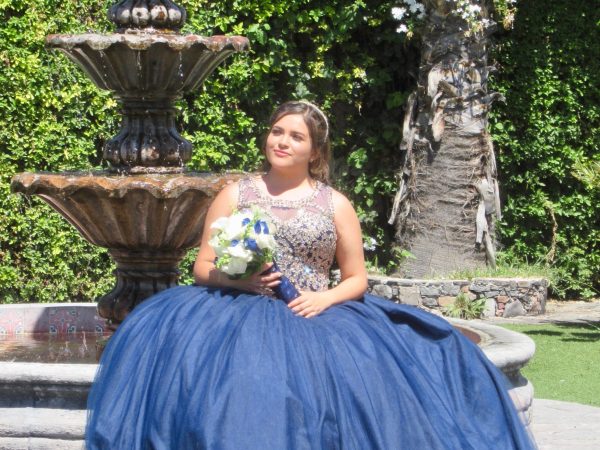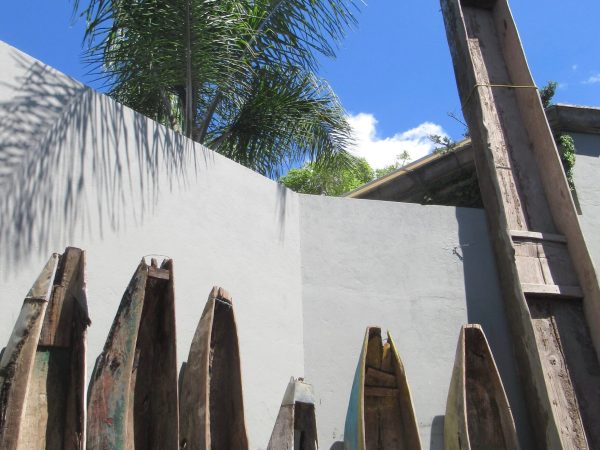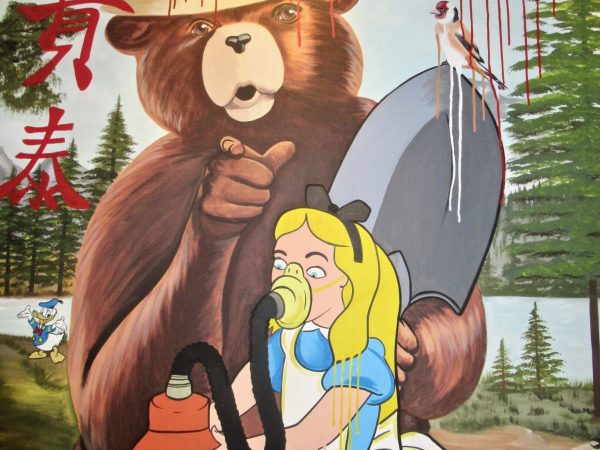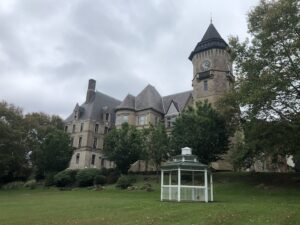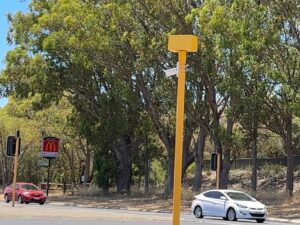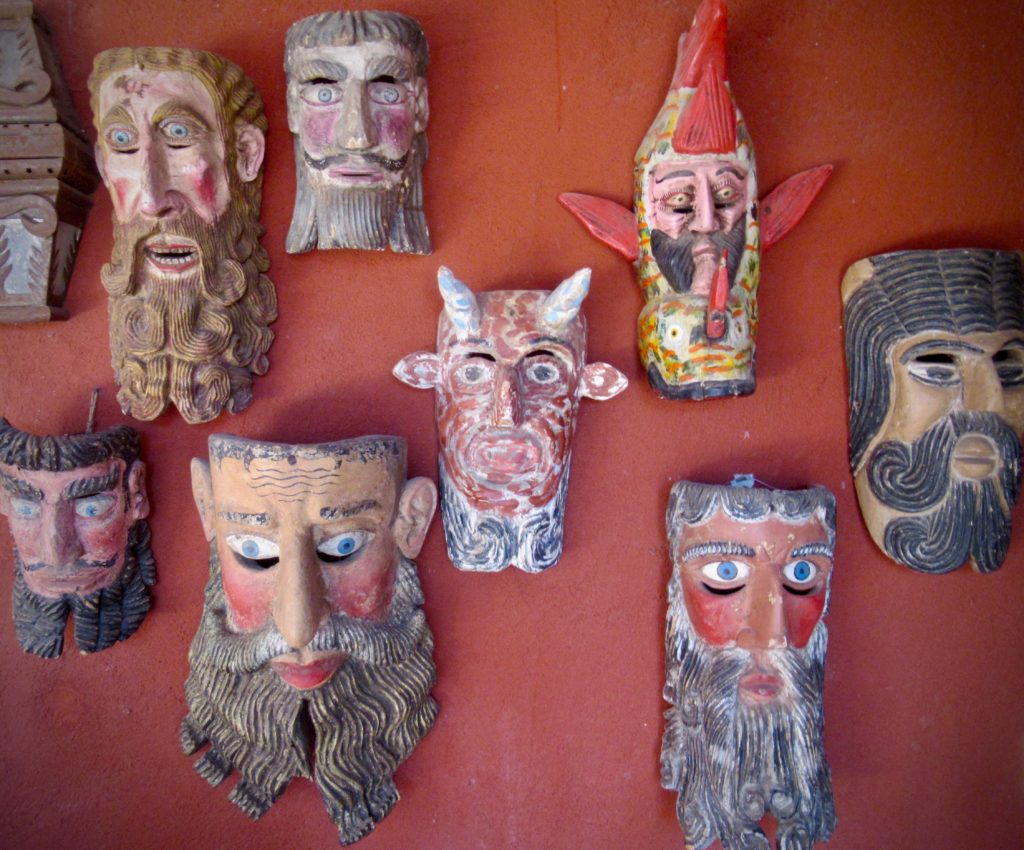
My quest to find out what’s so great about San Miguel de Allende starts with the Mask Museum at Cuesta de San Jose 32. It’s about a 20 minute walk from the central square, but as I have yet to acclimate to the altitude (6,200+ feet) the short, uphill slog leaves me winded. It didn’t help that I walked about a quarter mile past the entrance, a small nondescript wooden door with a tiny placard.
There is a city ordinance against overt business signage here, which is why you see colorful ribbons in many windows. The ribbons are a creative way to indicate that the structure a place of business. This is helpful, because walking the streets of San Miguel de Allende you have no idea what you’ll find behind any particular door,
The Mask Museum. part of the Casa de la Cuesta B&B (US180 per night), opened in 2006. It’s owner and curator is Bill LeVasseur, a former New York City ad man.
Bill started collecting Mexican masks 25 years ago, and has accumulated more than 500 from indigenous communities around the country. All were used in actual ceremonies, which renders them “authentic” to collectors.
He opens the museum to tours by appointment only, and today the group consists of around a dozen, mostly 50+ visitors — including several hungover Californians in town for a weekend wedding. Entry costs 100 pesos (around US$5), with all monies going to the local Centro Infantil de los Angeles day care center.
The tour starts with a 30 minute intro by Bill, who explains between Trump jokes how he observes and documents the masked dancing. Mask making has been around as part of ritual life in Mexico for thousands of years, he says, long before the Spanish arrived. Newly arrived evangelists took advantage of the local practice to teach the savages how to be Catholic. On a more positive note, the Spanish also brought with them Carnival. And, make no mistake, it was the liquor companies who brought us Cinco de Mayo, Bill says.
The masks are fantastic. There are depictions of all sorts of animals, old men and women, Europeans and Afro-Mexicans and various and sundry religious figures, including Judas, Pontius Pilate and lots and lots of blue-eyed devils. Bill has yet to open up a wing dedicated to lucha libre, that magnificent art of professional wrestling with a uniquely Mexican twist.
At the end of the mask tour, Bill’s wife, Heidi, gives a wonderful talk on Mexican Folk Art. She explains all the history and intricacies behind various styles of paper, embroidery, painting and even toy making. Holding a map of Mexico, she points out where each particular form of art originates: intricate stitching from the Mazahua in Michoacán or Amate paper from Puebla.
Heidi also is a wealth of explanation. For example, somebody like me might ask, “What’s up with the Mexicans and all those skulls?”
Heidi, after taking a deep breath, would then tell the story behind La Catrina, the female skeleton character featured in the Day of the Dead festival every October 31-November 2. She would then go on to explain how Mexicans celebrate their dead friends and relatives each of those three days. One day is even devoted to the souls that have nowhere to go — especially people who have drowned, for some reason.
If I were twenty years old, I might say, “That’s sick!”
But I’m not.
In total, I was with Bill and Heidi for a little more than two hours, Well worth it. The rest of my afternoon was spent walking downhill, dodging shoppers inside the Ignacio Ramirez Mercado and brides-to-be in the Jardin.
Fuel was obtained at Cafe Rama, where Mexico City artist and restaurateur Jaime Shelley and his wife, “Fin,” from Peoria, Illinois, have assembled an eclectic menu in an off-beat locale. You can check out some of Jaime’s art in a couple of the images below. Alice in Wonderland never looked so lost.

